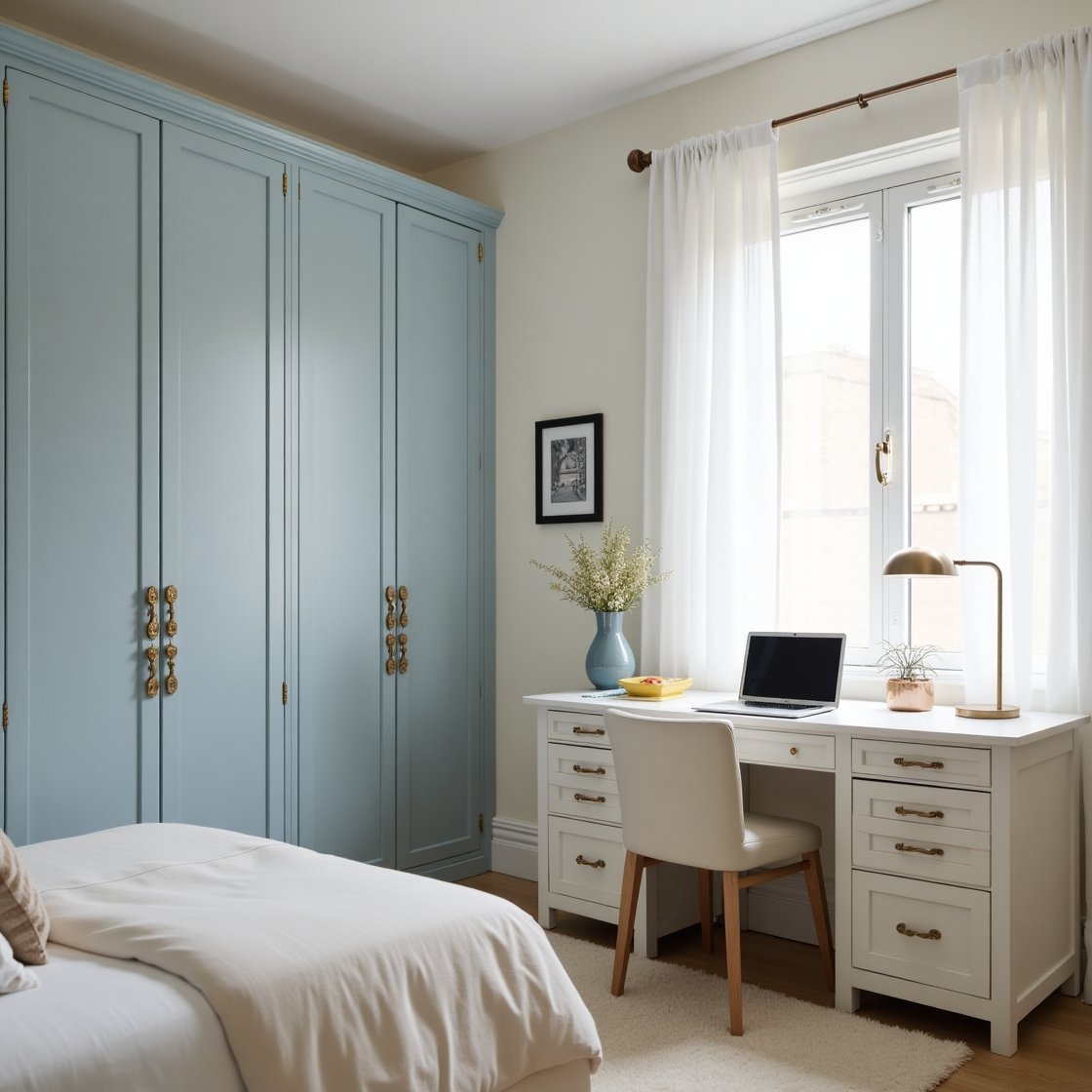A small bedroom doesn’t have to feel cramped or cluttered. With smart decorating strategies, you can transform even the tiniest room into a stylish, functional, and cozy retreat that feels bigger than it really is. The key is to make the most of your available space with intention, creativity, and a few visual tricks.
In this article, you’ll discover practical tips to maximize space, enhance comfort, and bring a sense of openness to your small bedroom—without compromising on style.
1. Use Light Colors to Open Up the Room
Color can dramatically impact how big or small a room feels. Lighter shades reflect more light and make a space feel larger and more airy.
Great choices include:
- Soft whites or ivory
- Light gray or greige
- Pale blues or greens
- Dusty pastels
Use these on walls, bedding, and curtains to visually expand the space. Avoid heavy, dark colors on large surfaces, unless used in very small doses.
2. Choose the Right Bed Size
The bed is often the largest item in a bedroom—but in small rooms, scale is everything.
Tips:
- A full-size bed (or even a twin) may work better than a queen or king
- Choose a bed frame with low or no footboard
- Try a minimalist platform bed to keep things visually light
- Avoid bulky headboards and oversized frames
Prioritize floor space over unnecessary bed size—your room will feel more open and functional.
3. Maximize Vertical Space
When floor space is limited, go up!
Ideas to use vertical space:
- Wall-mounted shelves above the bed or desk
- Tall, narrow dressers instead of wide ones
- Floating nightstands or side tables
- Hanging storage for accessories or clothing
- Pegboards or rails for organizing small items
This keeps surfaces clear and draws the eye upward, making the room feel taller.
4. Use Mirrors Strategically
Mirrors reflect light and create the illusion of depth, making small bedrooms feel significantly larger.
Try:
- A full-length mirror leaning against the wall
- Mirrored closet doors
- A round mirror above the bed or dresser
- A mirror across from a window to double natural light
Choose frames that match your decor for a clean and elegant look.
5. Keep Furniture Minimal and Multi-Functional
When decorating a small bedroom, less is more. Choose pieces that serve more than one purpose.
Smart furniture ideas:
- A storage bed with built-in drawers
- An ottoman that doubles as a bench and storage
- A desk that can be used as a vanity
- A nightstand with shelves or drawers
Avoid overcrowding. Leave space to move around comfortably and let your pieces “breathe.”
6. Use Light, Airy Curtains
Heavy, dark curtains can make a small room feel closed in. Instead, choose:
- Sheer or semi-sheer curtains
- Light fabrics like cotton or linen
- Neutral or soft-toned panels
Hang curtains close to the ceiling and let them fall to the floor—this gives the illusion of taller ceilings and more space.
7. Keep the Color Palette Cohesive
Using too many contrasting colors can chop up the space visually. Stick to a tight, cohesive color scheme throughout the room.
Tips:
- Use similar tones for bedding, walls, and furniture
- Add subtle pops of color through artwork or pillows
- Stick with 2–3 main colors, and keep accessories simple
A unified palette creates a calm, uncluttered look.
8. Declutter and Hide What You Don’t Use
Small bedrooms get overwhelmed easily by clutter. Be ruthless about what stays visible.
Decluttering tips:
- Keep surfaces like dressers and nightstands clear
- Use under-bed storage bins or vacuum bags
- Store off-season clothes elsewhere if possible
- Choose furniture with hidden compartments
- Use baskets or boxes to group small items
A clean room feels bigger and more peaceful—instantly.
9. Add Visual Interest Without Overcrowding
You don’t need to skip decor—just be selective. Choose pieces that are meaningful, beautiful, or add function.
Try:
- A small gallery wall with matching frames
- One bold piece of art as a focal point
- A stylish light fixture to draw the eye upward
- Decorative hooks or floating shelves
Let negative space work in your favor—it gives the room room to breathe.
10. Use Rugs to Define Zones
Rugs can help anchor your furniture and make the space feel intentionally designed.
Tips:
- Use a rug that extends at least halfway under the bed
- Choose a light or neutral tone to avoid crowding the floor visually
- Avoid patterns that are too bold or busy—simple is better in small rooms
Layering a rug under the bed or across the side adds texture and softness while framing the room.
Small Bedroom, Big Style
A small bedroom doesn’t mean limited comfort or beauty. With the right design choices, you can create a serene, spacious-feeling sanctuary—no matter the square footage.
Remember:
- Light colors and smart furniture choices go a long way
- Use vertical space and mirrors to expand the room visually
- Keep things simple, cohesive, and clutter-free
- Add personality without overcrowding
Sometimes, the coziest spaces are the most beautifully designed.
